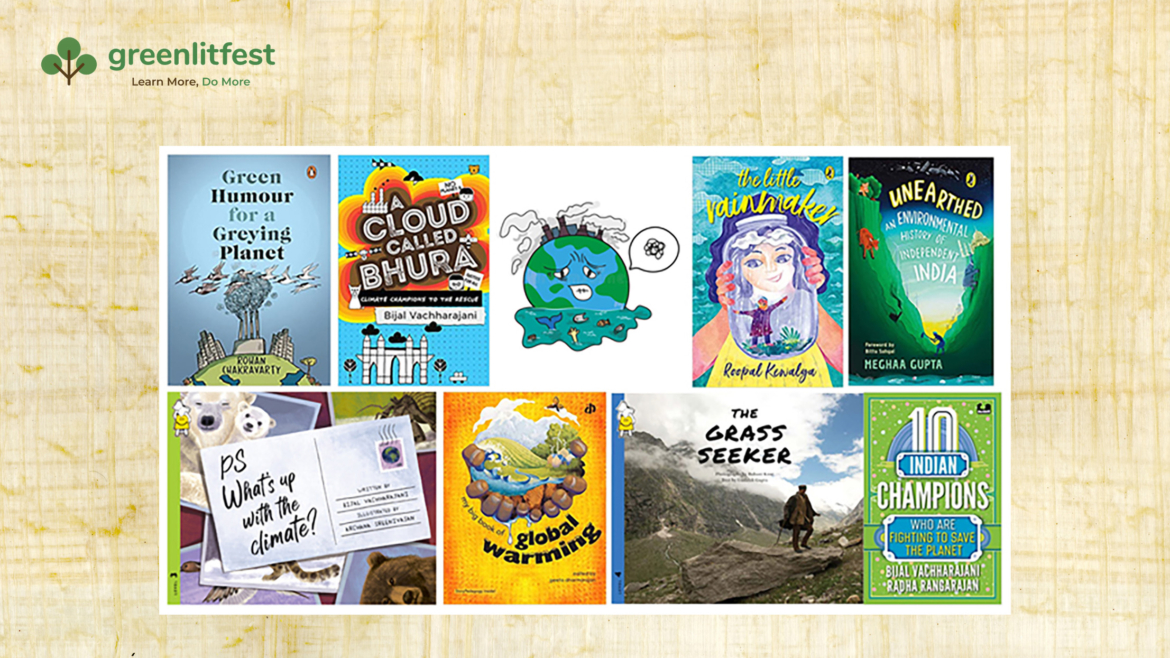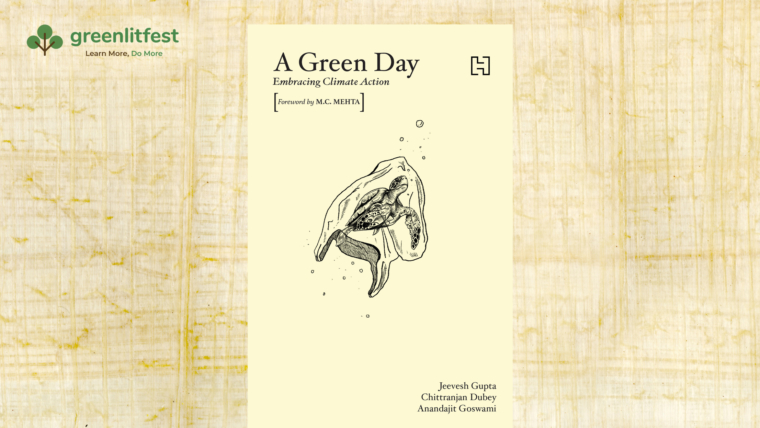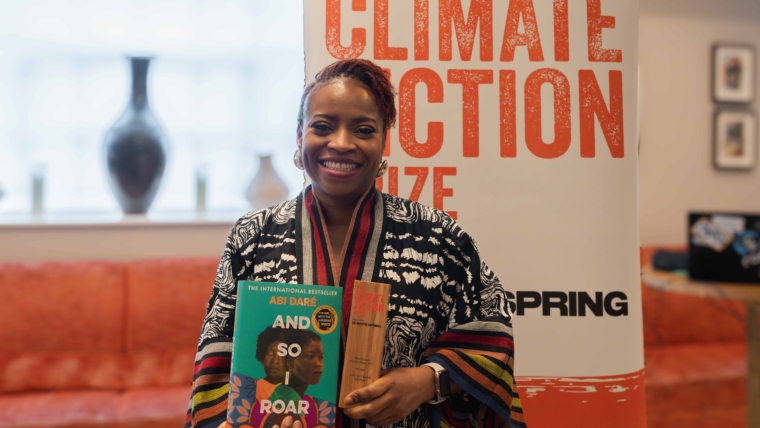With melting glaciers, forest fires, typhoons, epic floods and vanishing species all around us, the climate emergency is right here. Inspired by Greta Thunberg, the teenager climate activist from Sweden, young people around the world are raising their voices on a broad spectrum of issues related to the crisis. India is no exception. Over the past few years, young people like Ridhima Pandey and Licypriya Kangujam have captured public imagination in India and around the world with their strident activism. But, has children’s literature in India warmed up to climate change? Thankfully, the answer, while not a resounding yes, is a very hopeful yes.
At first glance, climate change may be deemed to be essentially non-fiction, populated by books filled with facts to raise awareness. However, it is heartening to note that over the years, this genre has diversified to include a plethora of titles that attempt to capture the various facets of the issue for young readers, instead of limiting themselves to the science behind it.
Inspired non-fiction
My Big Book of Global Warming from Katha’s ‘Thinkbook’ series is peppered with stories and poems that effectively blend fiction and non-fiction. From tree felling in Ladakh and the shifting agricultural techniques of the Baigas of Jharkhand to the global, youth-led social innovation enterprise Green Hope – the book is enriched by snippets that nudge readers to actively think of ways in which they can contribute to change.
The emphasis on people-driven narratives is an effective means to inspire readers and spark action. The Grass Seeker by Uddalak Gupta uses mesmerizing photographs to tell the tale of a Gaddi shepherd whose future generations will be permanently forced to change their way of life as they reel under the effects of global warming. In 10 Indian Champions Who Are Fighting to Save The Planet Bijal Vachharajani and Radha Rangarajan augment existing literature, with an anthology that brings together tales of various people working in the field, such as Minal Pathak, Aparajita Datta and Rohan Arthur. Reading stories of environmental heroes is essential to empower young people with role models who are bringing change on the ground, beyond activism.
Knowing our past struggles and victories provides an important insight to usher change. Meghaa Gupta’s Unearthed: An Environmental History of Independent India is a unique compendium that meticulously chronicles the country’s historical movements and significant green missions since 1947.
The rise of ‘Cli-fi’
Stories have a unique power to teleport the reader right into a character’s shoes, grapple with the problem from the inside, and feel the emotions. Hence, fictionalizing climate change is vital to situate it in our everyday lives.
Accelerated by the ‘Greta Thunberg Effect’, ‘Cli-fi’ (Climate fiction) is evolving into a popular genre in the West. In 2020, British YA author Lauren James established The Climate Fiction Writers League to raise awareness on climate change. The group has over 100 authors from around the world, including Bijal, whose much-loved book A Cloud Called Bhura highlights multiple facets of the climate change movement with a group of children becoming changemakers in the face of an ominous brown cloud threatening the health of their city. More recently, Bijal, who is one of India’s best-known cli-fi authors, has written Savi and the Memory Keeper, a funny, thoughtful and deeply moving story of finding resilience in the face of personal loss, grief and an ever-warming world.
Published just before Greta Thunberg came into the collective consciousness, Roopal Kewalya’s The Little Rainmaker, almost clairvoyantly, creates her fictional counterpart in the protagonist, Anoushqa. Situated in a rainless world, the book sees Anoushqa go on a determined trail to bring back the rain that her old and frail grandfather yearns to see. In her review of the book, Archana Atri writes, “both Anoushqa and Greta speak the same language when insisting that, “we hear the scientists,” as also when they’re guided by feelings and emotions. In an impassioned appeal to world leaders, Greta said, ‘We children are doing this because we want our hopes and dreams back.’ Within the pages of this novel, Anoushqa says, ‘Those who don’t feel are abnormal. And it would be awesome to have the power to shake things up when you really feel something.’ Interestingly enough, both use social media platforms to garner support for their cause – Anoushqa’s page is Grampa’s Dream and Greta’s global youth movement, Fridays for Future.”
Meanwhile, in Grandfather Goes On a Strike K.S. Nagarajan takes the fight beyond children, with Sathya’s feisty grandfather, who refuses to allow a neem tree to be ‘murdered’ by resolutely perching on it! Not surprisingly, the power of protest is an important theme in fiction covering facets of climate change.
However, sometimes fiction is just that – a richly imagined text that invokes the issue without pushing a point. In Gravepyres School for the Recently Deceased Anita Roy fictionalizes many real-world references, such as wildlife conservation, dams and plastic, to create a powerful narrative that effortlessly paints both life and death within a broader canvas of nature. Little Jose is dead and the only way he can return to his parents is through the River of Time. But dammed by ‘Plasticorp’, the river is nearly dead and the path to it is laden with adventure…
Playing with formats
In telling these stories of climate change, publishers, authors and illustrators have often employed interesting formats. Rohan Chakravarty’s Green Humour for a Greying Planet is collection of his trailblazing comics that expose current conflicts, ill-conceived environmental policies and wildlife issues while packing in a chuckle-inducing punch.
Similarly, P.S. What’s up with the climate? uses postcards written by animals under threat to alert children to what is happening to landscapes and animals around them, in a changing planet.
Need for more ‘local’ stories
The climate story is bleak. Agricultural distress, coastal destruction, loss of livelihood, forced migration, loss of biodiversity, health repercussions… it has far-reaching consequences. Yet, there are gaping holes, when it comes to telling stories that unravel the often-insidious ways in which the crisis finds itself in our lives. Effective storytelling and the use of fiction can bring these stories to children in gentle ways. In the words of the environmental scientist James Jones, “In a world where politicians and others frequently peddle fictions, the fiction author can tell truths that people otherwise wouldn’t hear.”
At its heart, the climate change narrative will change when we stop looking at nature as ‘The Giving Tree’ and realize that it is about saving a place we share and call home. To quote the Native American Chief Seattle,
“All things are connected like the blood that unites us all. Man did not weave the web of life, he is merely a strand in it. Whatever he does to the web, he does to himself.”
Recommended Reads
- My Big Book of Global Warming edited by Geeta Dharmarajan
- 10 Indian Champions Who Are Fighting to Save the Planet by Bijal Vachharajani and Radha Rangarajan
- Unearthed: The Environmental History of Independent India by Meghaa Gupta
- A Cloud Called Bhura: Climate Champions to the Rescue by Bijal Vachharajani
- The Little Rainmaker by Roopal Kewalya
- Green Humour for a Greying Planet by Rohan Chakravarty
- P.S. What’s up with the climate? by Bijal Vachharajani and Archana Sreenivasan
- The Grass Seeker by Uddalak Gupta
- Grandfather Goes on Strike by K.S. Nagarajan
- Gravepyres School for the Recently Deceased by Anita Roy




1 Comment